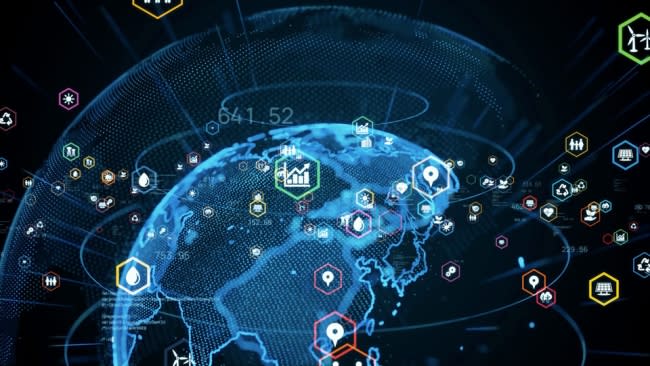NORTHAMPTON, MA / ACCESSWIRE / September 23, 2022 / Tetra Tech: Tetra Tech’s Rodrigo Chaparro, senior climate advisor, looks at three Cooperative Approaches as a market-based path toward net zero in advance of the 2022 United Nations Climate Change Conference (COP27).
This is the second in a three-part series exploring how Article 6 of the Paris Agreement can spur the clean energy transition.
The most recent Intergovernmental Panel on Climate Change (IPCC) report indicates that around 2,400 gigatons (Gt) of net CO2 emissions were generated globally from 1850 to 2019. More than 1,000 Gt (42 percent) occurred in the last 30 years.
We can only afford another 500 Gt in the next 80 years if we want to limit global warming to 1.5 °C by 2100. This target seems unlikely given current emission reduction pledges set forth in Nationally Determined Contributions (NDCs).
“Our best hope for deep emission reductions lies with the energy sector. Cooperative Approaches provide a market-based path forward.”
Our best hope for deep emission reductions lies with the energy sector. Countries must cut or eliminate fossil fuels, deploy low-emission technologies, transition to alternative energy sources, and prioritize energy efficiency. They also will need new business models that support CO2 reductions, such as the Cooperative Approaches defined at the 2021 United Nations Climate Change Conference (COP26) in Article 6, paragraph 2 of the Paris Agreement.
Developed countries are interested in using the Cooperative Approaches to acquire supplementary CO2 emission reductions. Developing countries stand to benefit from receiving technical assistance and the transfer of costly advanced technologies that will help them meet the conditional targets defined in their NDCs. The Cooperative Approaches provide a market-based path forward and can take many forms, including the three models outlined below.
Model 1-Joint Crediting Mechanism
Japan instituted the Joint Crediting Mechanism (JCM), a pioneering project-based option under Article 6 to cooperate with developing countries on greenhouse gas (GHG) reductions and sustainable development. Japan works with 17 partner countries under the JCM to facilitate uptake of leading low-carbon technologies. Each project’s resulting emission reduction is assessed as a contribution by both the partner country and Japan and produces a tradable credit.
Each country is committed to maintain a registry, issue credits in a timely manner, and refrain from using JCM mitigation projects for any other international climate mitigation mechanisms to avoid double counting. The goal of the JCM is to reach a cumulative GHG emission reduction of 100 million tons of CO2e by 2030.
Through the JCM, the Thai company, SNC Former Public Company Limited, installed 3.4 megawatts of rooftop solar at six factories that produce air-conditioning components. The project uses high-durability crystalline silicon photovoltaic modules produced by Sharp Energy Solutions, a Japanese corporation with more stringent standards than those of the International Electrotechnical Commission. The solar power displaces electricity generated by fossil fuel-based power plants, contributing to GHG emission reductions. Participants jointly establish the distribution of verified credits generated by the project and may allocate part of the credits to their respective countries.
Japan’s Ministry of the Environment partially supported the project in this case, aiming to understand the operational aspects of the mechanism, acquire JCM credits toward Japan’s NDCs, and promote the transfer of low-carbon technologies. Both the Japanese technology manufacturer and the Thai company benefit, creating net GHG emission reductions.
Most JCM projects involve renewable energy and energy efficiency, but there are also some waste-to-energy and transport projects. As more countries adopt Cooperative Approaches, the diversity of projects, types of support, and partnership models could extend to areas like electromobility, green hydrogen, and advanced technologies where utilities can play an important role. The current phase is key to building the necessary infrastructure in developing countries so Cooperative Approaches can operate smoothly.
Model 2-Utility-Transportation Partnerships
Companies like Enel X are leading partnerships using models that offer financing, intelligent charging solutions, and green certificates. Enel X’s successes include delivering six electro-terminals and 401 electric buses in Bogota, Colombia, and 11 electro-terminals, 40 smart bus stops, and 245 chargers in Santiago, Chile.
Global utilities could use the carbon market mechanism under Article 6 to develop an entirely new business model that links power utility know-how with local public transportation operators and companies launching electric transportation fleets.
The scheme can be used at a global or regional scale as it is structured to promote South-South cooperation as well. For example, a foreign or regional utility could establish a contract with a local bus concessionaire to build or finance a renewable energy plant that delivers clean electricity and the required charging infrastructure. In exchange, the utility could receive a share of the CO2 emission reductions associated with the project, which that utility’s country can use to meet NDC targets. This type of agreement also helps distribute the project risks, facilitating access to finance.
Model 3-Utility-Green Hydrogen Partnerships
The hydrogen supply chain is key for developed economies in achieving decarbonization goals, especially in light of the expected steady increase in carbon taxes. Drivers of green hydrogen market growth include concerns related to the security of the fossil fuel supply, the drop in renewable energy costs, and hydrogen’s ability to increase demand-side flexibility through storage applications. The market is predicted to reach $417.5 million by 2028 from an estimated $223 million in 2022.
In advanced economies, green hydrogen can play a role in the clean energy transition as an enabler for integrating higher shares of renewable energy in the power sector. It also supports sectors struggling to decarbonize, such as trucking, aviation, shipping, heating, and other energy-intensive industries. In most developing countries, green hydrogen is not seen as a competitive source of energy in the short term, but it can certainly become a valuable export.
“A Cooperative Approach could be used to facilitate international deployment of technology, bring concessional climate finance to investors, and structure the exchange of carbon credits.”
Utilities also are exploring new international avenues with green hydrogen. The Haru Oni pilot project in Chile will harness the strong winds of Chile’s Magallanes region to produce green hydrogen that will be used to create a synthetic fuel for export. The project combines the experience of an Italian utility subsidiary of Siemens, a petroleum company, and German car manufacturer Porsche, which will use the fuel in its motorsports fleet. A Cooperative Approach could be used to facilitate international deployment of the technology produced in Germany, bring concessional climate finance to the investors, and structure the exchange of carbon credits.
Most of the CO2 emission reductions would be transferred to Germany. Chile would benefit not only from the export of hydrogen but also from introducing more renewable energy to the grid.
Inventing new models for the new normal
As decarbonization leaders, many power and utility companies are looking to reinvent themselves, experimenting with new business models that serve the energy transition and the bottom line. While the details of partnerships between sectors and countries are diverse, there is a common thread-planning, innovation, and international collaboration. The Cooperative Approaches can play a pivotal role in these initiatives by also facilitating access to new technologies, climate finance, and carbon trading.
How can Tetra Tech help clients use Cooperative Approaches?
Tetra Tech’s energy consulting and technical implementation experts can support governments and private sector clients in the following areas.
Deploying new carbon markets
-
Advise governments on regulations for energy projects under Cooperative Approaches and the Sustainable Development Mechanism (SDM) (e.g., project eligibility, compensation mechanisms, financing, monitoring and verification, legal advice)
-
Build clean energy portfolios with carbon offsets that can be traded internationally via the Cooperative Approaches and SDM markets
-
Ensure carbon market compliance and maximize the potential to lower emission reduction costs
Designing and implementing decarbonization pathways for utilities and private corporations
-
Analyze the market and identify low-carbon financing and investment opportunities
-
Deploy the technology necessary to carry out decarbonization strategies
-
Assess quality offsets that can supplement emission targets, with services including screening projects, performing financial and commercial due diligence, and negotiating with project developers
Read more from Rodrigo about how Article 6 of the Paris Agreement can spur the clean energy transition:


View additional multimedia and more ESG storytelling from Tetra Tech on 3blmedia.com.
Contact Info:
Spokesperson: Tetra Tech
Website: http://www.tetratech.com/en
Email: info@3blmedia.com
SOURCE: Tetra Tech
View source version on accesswire.com:
https://www.accesswire.com/717173/Three-New-Business-Models-to-Achieve-Carbon-Reduction-Goals




